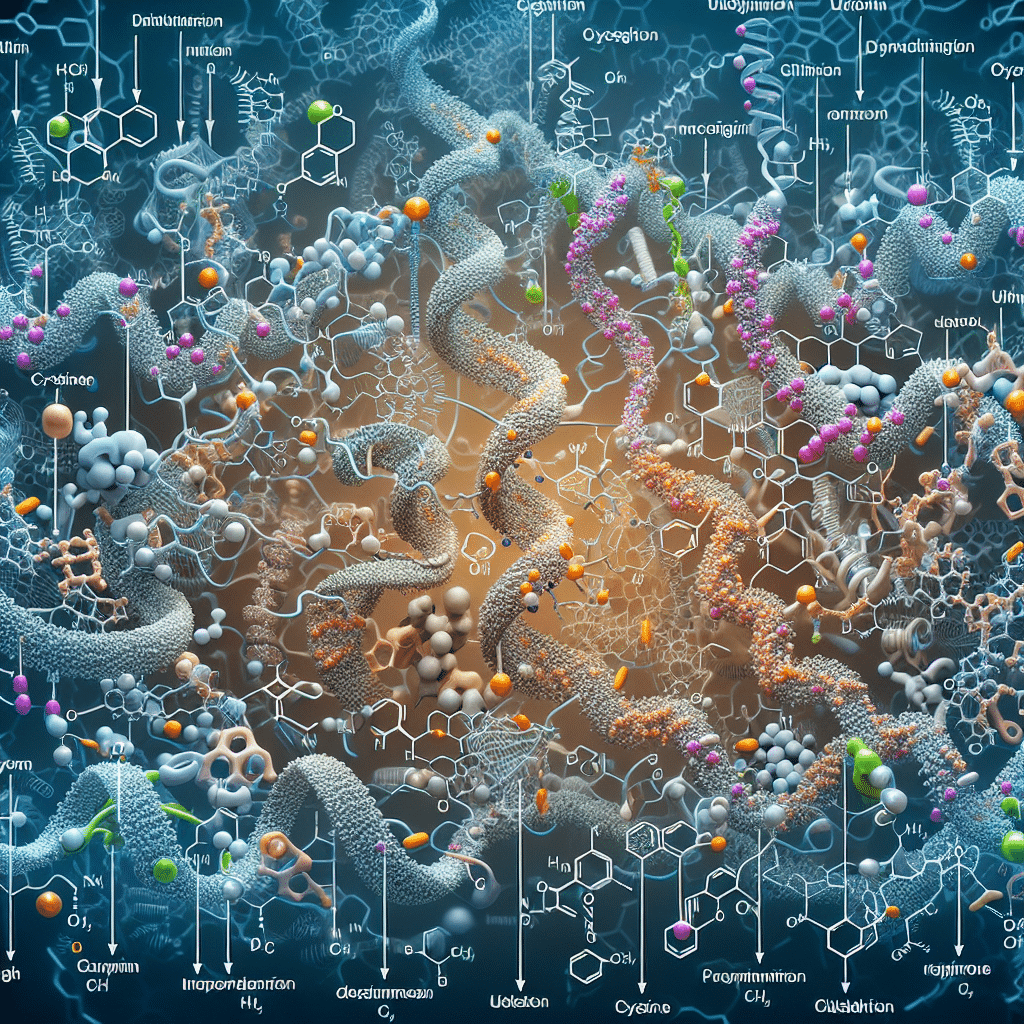Cysteine Glutathione Pathway: How It Works
-
Table of Contents
- Unlocking the Secrets of the Cysteine Glutathione Pathway
- Introduction to the Cysteine Glutathione Pathway
- The Biochemical Steps of Glutathione Synthesis
- Regulation of the Cysteine Glutathione Pathway
- Functions and Benefits of Glutathione
- Therapeutic Applications and Research
- Challenges and Considerations
- Conclusion: The Importance of the Cysteine Glutathione Pathway
- Discover ETprotein’s High-Quality Protein Products
Unlocking the Secrets of the Cysteine Glutathione Pathway

The cysteine glutathione pathway is a crucial biochemical route within our cells that has far-reaching implications for health, disease prevention, and overall well-being. Understanding how this pathway operates is essential for researchers, healthcare professionals, and anyone interested in maintaining optimal health. This article delves into the intricacies of the cysteine glutathione pathway, exploring its functions, benefits, and the potential for therapeutic applications.
Introduction to the Cysteine Glutathione Pathway
Glutathione, often referred to as the “master antioxidant,” is a tripeptide composed of three amino acids: cysteine, glutamate, and glycine. It plays a pivotal role in protecting cells from oxidative stress, detoxifying harmful substances, and maintaining the immune system. The cysteine glutathione pathway is the biochemical process by which glutathione is synthesized and recycled within the body. This pathway is not only essential for producing glutathione but also for regulating its levels and ensuring its availability when needed.
The Biochemical Steps of Glutathione Synthesis
The synthesis of glutathione occurs in two main steps:
- First Step: The enzyme gamma-glutamylcysteine synthetase catalyzes the formation of gamma-glutamylcysteine from glutamate and cysteine.
- Second Step: Glutathione synthetase then adds glycine to gamma-glutamylcysteine, completing the synthesis of glutathione.
These reactions require energy in the form of ATP and are tightly regulated to ensure that glutathione is produced according to the cell’s needs.
Regulation of the Cysteine Glutathione Pathway
The cysteine glutathione pathway is regulated by several factors, including:
- The availability of precursor amino acids, particularly cysteine, which is often the limiting factor in glutathione synthesis.
- Cellular demand for glutathione, which increases in response to oxidative stress or exposure to toxins.
- Feedback inhibition by glutathione itself, which prevents overproduction and maintains homeostasis.
Functions and Benefits of Glutathione
Glutathione serves multiple functions within the body, including:
- Neutralizing free radicals and reactive oxygen species (ROS), thereby preventing cellular damage.
- Detoxifying xenobiotics and endogenous metabolites, such as hormones and prostaglandins.
- Regenerating other antioxidants, like vitamins C and E, back to their active forms.
- Supporting the immune system by influencing lymphocyte function and cytokine production.
- Facilitating the transport of amino acids across cell membranes.
The benefits of maintaining adequate glutathione levels are extensive and include reduced risk of chronic diseases, improved immune function, and enhanced detoxification processes.
Therapeutic Applications and Research
Due to its central role in maintaining cellular health, the cysteine glutathione pathway has been the focus of numerous studies exploring its therapeutic potential. Research has investigated the use of glutathione in conditions such as:
- Neurodegenerative diseases like Parkinson’s and Alzheimer’s, where oxidative stress is a contributing factor.
- Chronic liver diseases, where glutathione can help in detoxification processes.
- Cancer, as certain tumors have been found to have altered glutathione metabolism.
- Cardiovascular diseases, where oxidative stress can lead to tissue damage and inflammation.
Supplementation with cysteine donors, such as N-acetylcysteine (NAC), has been shown to boost glutathione levels and provide therapeutic benefits in some of these conditions.
Challenges and Considerations
While the cysteine glutathione pathway offers promising therapeutic avenues, there are challenges to consider:
- Oral supplementation with glutathione is not always effective due to its breakdown in the digestive system.
- Individual variations in metabolism and genetic polymorphisms can affect the efficacy of glutathione-related therapies.
- Long-term supplementation with high doses of cysteine donors may have adverse effects and requires careful monitoring.
Conclusion: The Importance of the Cysteine Glutathione Pathway
In conclusion, the cysteine glutathione pathway is a vital component of cellular defense mechanisms. It plays a significant role in protecting the body from oxidative damage, detoxifying harmful substances, and supporting the immune system. Understanding this pathway is crucial for developing targeted therapies to combat various diseases and for promoting overall health. As research continues to uncover the complexities of glutathione metabolism, the potential for new and innovative treatments grows.
Discover ETprotein’s High-Quality Protein Products
If you’re looking to support your health and wellness journey, consider exploring ETprotein’s range of protein products. Their offerings include high-quality organic proteins and L-(+)-Ergothioneine (EGT) that cater to various industries and personal health needs. With a commitment to non-GMO, allergen-free products, and purity levels exceeding 98%, ETprotein stands as a trusted source for your protein supplementation requirements.
About ETprotein:
ETprotein, a reputable protein and L-(+)-Ergothioneine (EGT) Chinese factory manufacturer and supplier, is renowned for producing, stocking, exporting, and delivering the highest quality organic bulk vegan proteins and L-(+)-Ergothioneine. They include Organic rice protein, clear rice protein, pea protein, clear pea protein, watermelon seed protein, pumpkin seed protein, sunflower seed protein, mung bean protein, peanut protein, and L-(+)-Ergothioneine EGT Pharmaceutical grade, L-(+)-Ergothioneine EGT food grade, L-(+)-Ergothioneine EGT cosmetic grade, L-(+)-Ergothioneine EGT reference grade and L-(+)-Ergothioneine EGT standard. Their offerings, characterized by a neutral taste, non-GMO, allergen-free attributes, with L-(+)-Ergothioneine purity over 98%, 99%, cater to a diverse range of industries. They serve nutraceutical, pharmaceutical, cosmeceutical, veterinary, as well as food and beverage finished product distributors, traders, and manufacturers across Europe, USA, Canada, Australia, Thailand, Japan, Korea, Brazil, and Chile, among others.
ETprotein specialization includes exporting and delivering tailor-made protein powder and finished nutritional supplements. Their extensive product range covers sectors like Food and Beverage, Sports Nutrition, Weight Management, Dietary Supplements, Health and Wellness Products, and Infant Formula, ensuring comprehensive solutions to meet all your protein needs.
As a trusted company by leading global food and beverage brands and Fortune 500 companies, ETprotein reinforces China’s reputation in the global arena. For more information or to sample their products, please contact them and email sales(at)ETprotein.com today.














